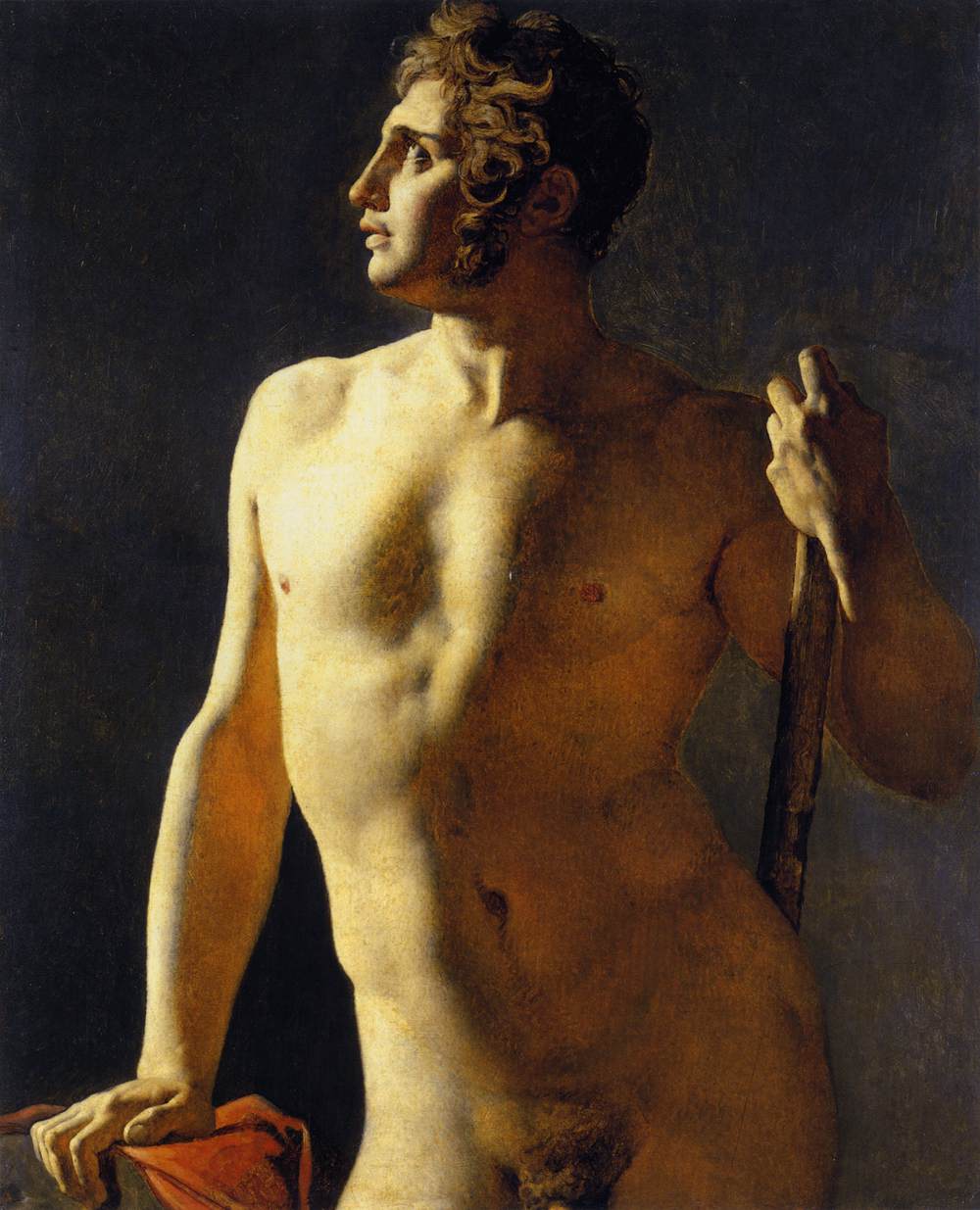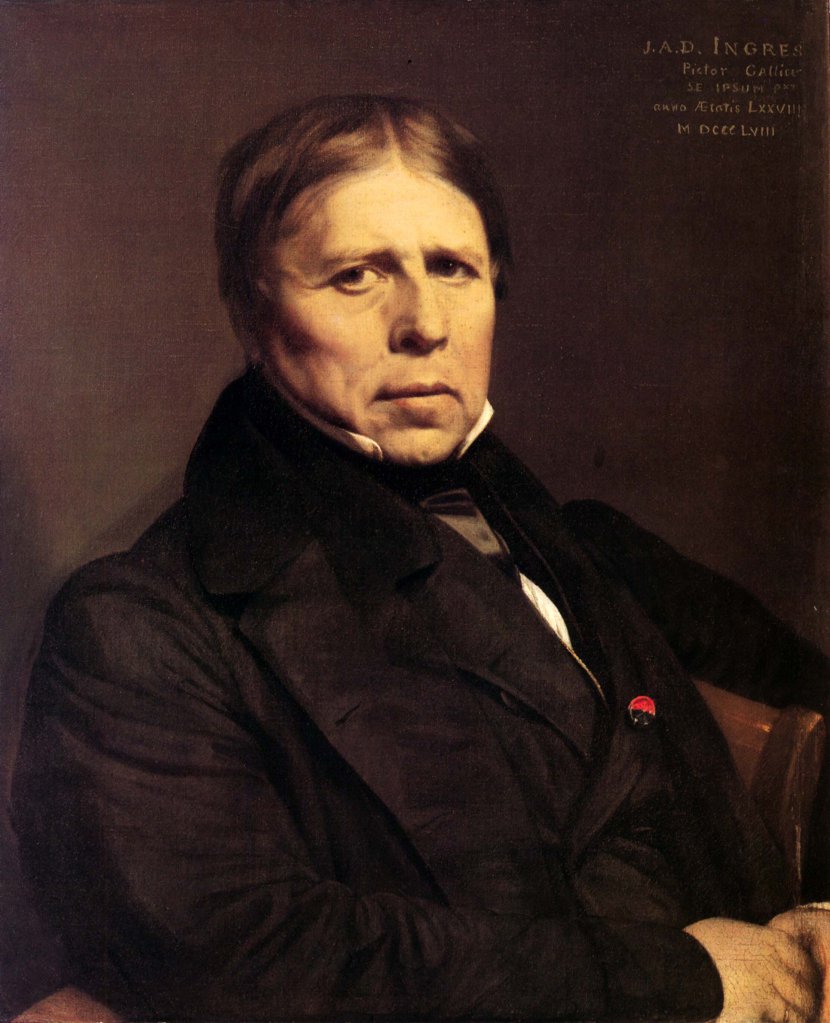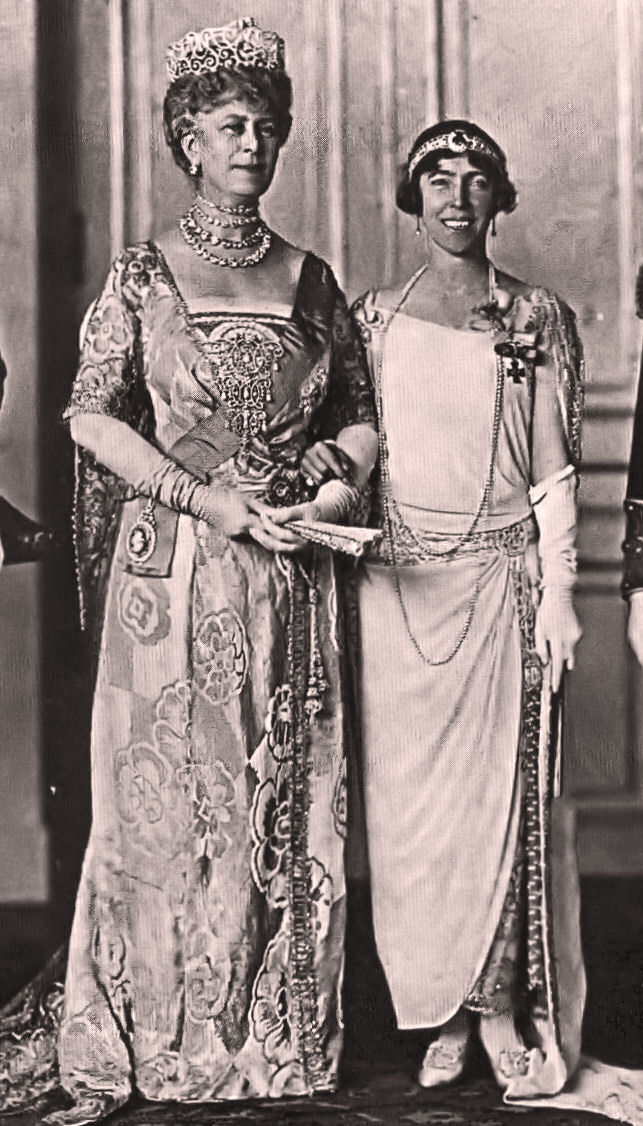|
Mademoiselle Caroline Rivière
The portrait of ''Mademoiselle Caroline Rivière'' was painted in 1806Dequier, Angèle.Mademoiselle Caroline Rivière". Louvre. Retrieved on October 31, 2008. Some sources date the painting to 1805; see Rosenblum, 58 by the French Neoclassical artist Jean-Auguste-Dominique Ingres, and today hangs in the Louvre. It is the third of three portraits of the Rivière family that the artist painted that year. Caroline's father, Philibert Rivière, was a successful court official under Napoleon's empire and sought to commemorate himself, his wife and daughter through a commission with the then young and rising artist—Ingres's portraits of Philibert and his wife are also still extant. Although Ingres favoured subject matter drawn from history or Greek legend, at this early stage in his career, he earned his living mainly through commissions from wealthy patrons. The family lived outside Paris at St. Germain-en-Laye, and Mademoiselle Caroline Rivière would have been between 13 and 1 ... [...More Info...] [...Related Items...] OR: [Wikipedia] [Google] [Baidu] |
Jean-Auguste-Dominique Ingres
Jean-Auguste-Dominique Ingres ( ; ; 29 August 1780 – 14 January 1867) was a French Neoclassicism, Neoclassical Painting, painter. Ingres was profoundly influenced by past artistic traditions and aspired to become the guardian of academic orthodoxy against the ascendant Romanticism (art), Romantic style. Although he considered himself a History painting, painter of history in the tradition of Nicolas Poussin and Jacques-Louis David, it is his portraits, both painted and drawn, that are recognized as his greatest legacy. His expressive distortions of form and space made him an important precursor of modern art, influencing Henri Matisse, Pablo Picasso, and other modernists. Born into a modest family in Montauban, he travelled to Paris to study in the studio of Jacques-Louis David, David. In 1802 he made his Paris Salon, Salon debut, and won the for his painting ''The Ambassadors of Agamemnon in the tent of Achilles''. By the time he departed in 1806 for his residency in Ro ... [...More Info...] [...Related Items...] OR: [Wikipedia] [Google] [Baidu] |
Feather Boa
A boa is a fashion accessory that is usually worn wrapped around the neck like a scarf. Feather boas are most common, although modern boas are most often made with synthetic feathers. Construction A boa can be made of fur, but it is usually made instead from various types of feathers. Ostrich, marabou stork, and turkey are the most common feathers used, although non-feather boas are also available. The feathers go through bleaching or dyeing processes and are glued and stitched into lengths called "ply". Sometimes more natural boas are produced. A lightweight chandelle boa might only weigh , whereas a 24 ply ostrich boa can weigh as much as . The more ply, the fluffier and thicker the boa. Boas are generally measured by weight (grams), length (centimetres), and ply. Boas are available through novelty, costume, or lingerie shops, as well as online. With the development of "fun fur" or "eyelash" yarns in the late 20th century, an adept craftsperson can knit a boa of one solid ... [...More Info...] [...Related Items...] OR: [Wikipedia] [Google] [Baidu] |
Portraits Of Women
A portrait is a painting, photograph, sculpture, or other artistic representation of a person, in which the face is always predominant. In arts, a portrait may be represented as half body and even full body. If the subject in full body better represents personality and mood, this type of presentation may be chosen. The intent is to display the likeness, personality, and even the mood of the person. For this reason, in photography a portrait is generally not a snapshot, but a composed image of a person in a still position. A portrait often shows a person looking directly at the painter or photographer, to most successfully engage the subject with the viewer, but portrait may be represented as a profile (from aside) and 3/4. History Prehistorical portraiture Plastered human skulls were reconstructed human skulls that were made in the ancient Levant between 9000 and 6000 BC in the Pre-Pottery Neolithic B period. They represent some of the oldest forms of art in the Middle Eas ... [...More Info...] [...Related Items...] OR: [Wikipedia] [Google] [Baidu] |
19th-century Portraits
The 19th century began on 1 January 1801 (represented by the Roman numerals MDCCCI), and ended on 31 December 1900 (MCM). It was the 9th century of the 2nd millennium. It was characterized by vast social upheaval. Slavery was abolished in much of Europe and the Americas. The First Industrial Revolution, though it began in the late 18th century, expanded beyond its British homeland for the first time during the 19th century, particularly remaking the economies and societies of the Low Countries, France, the Rhineland, Northern Italy, and the Northeastern United States. A few decades later, the Second Industrial Revolution led to ever more massive urbanization and much higher levels of productivity, profit, and prosperity, a pattern that continued into the 20th century. The Catholic Church, in response to the growing influence and power of modernism, secularism and materialism, formed the First Vatican Council in the late 19th century to deal with such problems and confirm ce ... [...More Info...] [...Related Items...] OR: [Wikipedia] [Google] [Baidu] |
Paintings In The Louvre By French Artists
Painting is a Visual arts, visual art, which is characterized by the practice of applying paint, pigment, color or other medium to a solid surface (called "matrix" or "Support (art), support"). The medium is commonly applied to the base with a brush. Other implements, such as palette knives, sponges, airbrushes, the artist's fingers, or even a dripping technique that uses gravity may be used. One who produces paintings is called a painter. In art, the term "painting" describes both the act and the result of the action (the final work is called "a painting"). The support for paintings includes such surfaces as walls, paper, canvas, wood, glass, lacquer, pottery, leaf, copper and concrete, and the painting may incorporate other materials, in single or multiple form, including sand, clay, paper, cardboard, newspaper, plaster, gold leaf, and even entire objects. Painting is an important form of visual arts, visual art, bringing in elements such as drawing, Composition (visual art ... [...More Info...] [...Related Items...] OR: [Wikipedia] [Google] [Baidu] |
1806 Paintings
Eighteen or 18 may refer to: * 18 (number) * One of the years 18 BC, AD 18, 1918, 2018 Film, television and entertainment * ''18'' (film), a 1993 Taiwanese experimental film based on the short story ''God's Dice'' * ''Eighteen'' (film), a 2005 Canadian dramatic feature film * 18 (British Board of Film Classification), a film rating in the United Kingdom, also used in Ireland by the Irish Film Classification Office * 18 (''Dragon Ball''), a character in the ''Dragon Ball'' franchise * "Eighteen", a 2006 episode of the animated television series ''12 oz. Mouse'' Science * Argon, a noble gas in the periodic table * 18 Melpomene, an asteroid in the asteroid belt Music Albums * ''18'' (Moby album), 2002 * ''18'' (Nana Kitade album), 2005 * '' 18...'', 2009 debut album by G.E.M. * ''18'' (Jeff Beck and Johnny Depp album), 2022 Songs * "18" (5 Seconds of Summer song), from their 2014 eponymous debut album * "18" (One Direction song), from their 2014 studio album ''Four'' * ... [...More Info...] [...Related Items...] OR: [Wikipedia] [Google] [Baidu] |
Portraits By Jean-Auguste-Dominique Ingres
A portrait is a painting, photograph, sculpture, or other artistic representation of a person, in which the face is always predominant. In arts, a portrait may be represented as half body and even full body. If the subject in full body better represents personality and mood, this type of presentation may be chosen. The intent is to display the likeness, personality, and even the mood of the person. For this reason, in photography a portrait is generally not a snapshot, but a composed image of a person in a still position. A portrait often shows a person looking directly at the painter or photographer, to most successfully engage the subject with the viewer, but portrait may be represented as a profile (from aside) and 3/4. History Prehistorical portraiture Plastered human skulls were reconstructed human skulls that were made in the ancient Levant between 9000 and 6000 BC in the Pre-Pottery Neolithic B period. They represent some of the oldest forms of art in the Middle East ... [...More Info...] [...Related Items...] OR: [Wikipedia] [Google] [Baidu] |
List Of Paintings By Jean-Auguste-Dominique Ingres
This is an incomplete list of paintings by the French Neoclassicism, neoclassical painter Jean-Auguste-Dominique Ingres (1780–1867). Although he considered himself a classicist in the tradition of Nicolas Poussin and Jacques-Louis David and had a longstanding rivalry with Eugène Delacroix, some of his later works included elements of romanticism and orientalism. Despite his desire to be seen as a great History painting, history painter, traditionally viewed as the Hierarchy of genres, most important genre of painting, it is his portraits, both painted and drawn, rather than his history paintings that are recognized as his greatest legacy. His expressive distortions of form and space made him an important precursor of modern art, influencing Pablo Picasso, Picasso, Henri Matisse, Matisse and other modernists. In 1802 he made his Salon debut, and won the Prix de Rome for his painting ''The Ambassadors of Agamemnon in the tent of Achilles''. By the time he departed in 1806 for his ... [...More Info...] [...Related Items...] OR: [Wikipedia] [Google] [Baidu] |
Long Gloves
An evening glove or opera glove is a type of glove that reaches beyond the elbow. They are traditionally worn by women on formal occasions. Women's gloves for formal and semi-formal wear come in three lengths for women: wrist, elbow, and opera or full-length (over the elbow, usually reaching to the biceps but sometimes to the full length of the arm). The most expensive full-length gloves are custom-made of kidskin. Many other types of leather, most usually soft varieties of cowhide, are used in making full-length gloves; patent leather and suede are especially popular as alternatives to kidskin, and are often more affordable than kidskin. Satin and stretch satin materials are extremely popular, and there are mass-produced varieties as well. More unusual glove materials include leathers made from salmon, python, and stingray. History Western world While the etymology of the term ''opera glove'' is unknown, gloves of above-the-elbow length have been worn since at least the lat ... [...More Info...] [...Related Items...] OR: [Wikipedia] [Google] [Baidu] |
Early Netherlandish Painting
Early Netherlandish painting is the body of work by artists active in the Burgundian Netherlands, Burgundian and Habsburg Netherlands during the 15th- and 16th-century Northern Renaissance period, once known as the Flemish Primitives. It flourished especially in the cities of Bruges, Ghent, Mechelen, Leuven, Tournai and Brussels, all in present-day Belgium. The period begins approximately with Robert Campin and Jan van Eyck in the 1420s and lasts at least until the death of Gerard David in 1523,Spronk (1996), 7 although many scholars extend it to the beginning of the Dutch Revolt in 1566 or 1568 – Max J. Friedländer's acclaimed surveys run through Pieter Bruegel the Elder. Early Netherlandish painting coincides with the Early and High Renaissance, High Italian Renaissance, but the early period (until about 1500) is seen as an independent artistic evolution, separate from the Renaissance humanism that characterised developments in Italy. Beginning in the 1490s, as increasing n ... [...More Info...] [...Related Items...] OR: [Wikipedia] [Google] [Baidu] |
Oil On Canvas
Oil painting is a painting method involving the procedure of painting with pigments combined with a drying oil as the binder. It has been the most common technique for artistic painting on canvas, wood panel, or copper for several centuries. The advantages of oil for painting images include "greater flexibility, richer and denser color, the use of layers, and a wider range from light to dark". The oldest known oil paintings were created by Buddhist artists in Afghanistan, and date back to the 7th century AD. Oil paint was later developed by Europeans for painting statues and woodwork from at least the 12th century, but its common use for painted images began with Early Netherlandish painting in Northern Europe, and by the height of the Renaissance, oil painting techniques had almost completely replaced the use of egg tempera paints for panel paintings in most of Europe, though not for Orthodox icons or wall paintings, where tempera and fresco, respectively, remained the usua ... [...More Info...] [...Related Items...] OR: [Wikipedia] [Google] [Baidu] |
Jan Van Eyck
Jan van Eyck ( ; ; – 9 July 1441) was a Flemish people, Flemish painter active in Bruges who was one of the early innovators of what became known as Early Netherlandish painting, and one of the most significant representatives of Early Northern Renaissance art. According to Vasari and other art historians including Ernst Gombrich, he invented oil painting, Gombrich, The Story of Art, page 240 though most now regard that claim as an oversimplification. The surviving records indicate that he was born around 1380 or 1390, in Maaseik (then Maaseyck, hence his name), Limburg (Belgium), Limburg, which is located in present-day Belgium. He took employment in The Hague around 1422, when he was already a master painter with workshop assistants, and was employed as painter and ''valet de chambre'' to John III, Duke of Bavaria, John III the Pitiless, ruler of the counties of County of Holland, Holland and County of Hainaut, Hainaut. After John's death in 1425, he was later appointed a ... [...More Info...] [...Related Items...] OR: [Wikipedia] [Google] [Baidu] |










